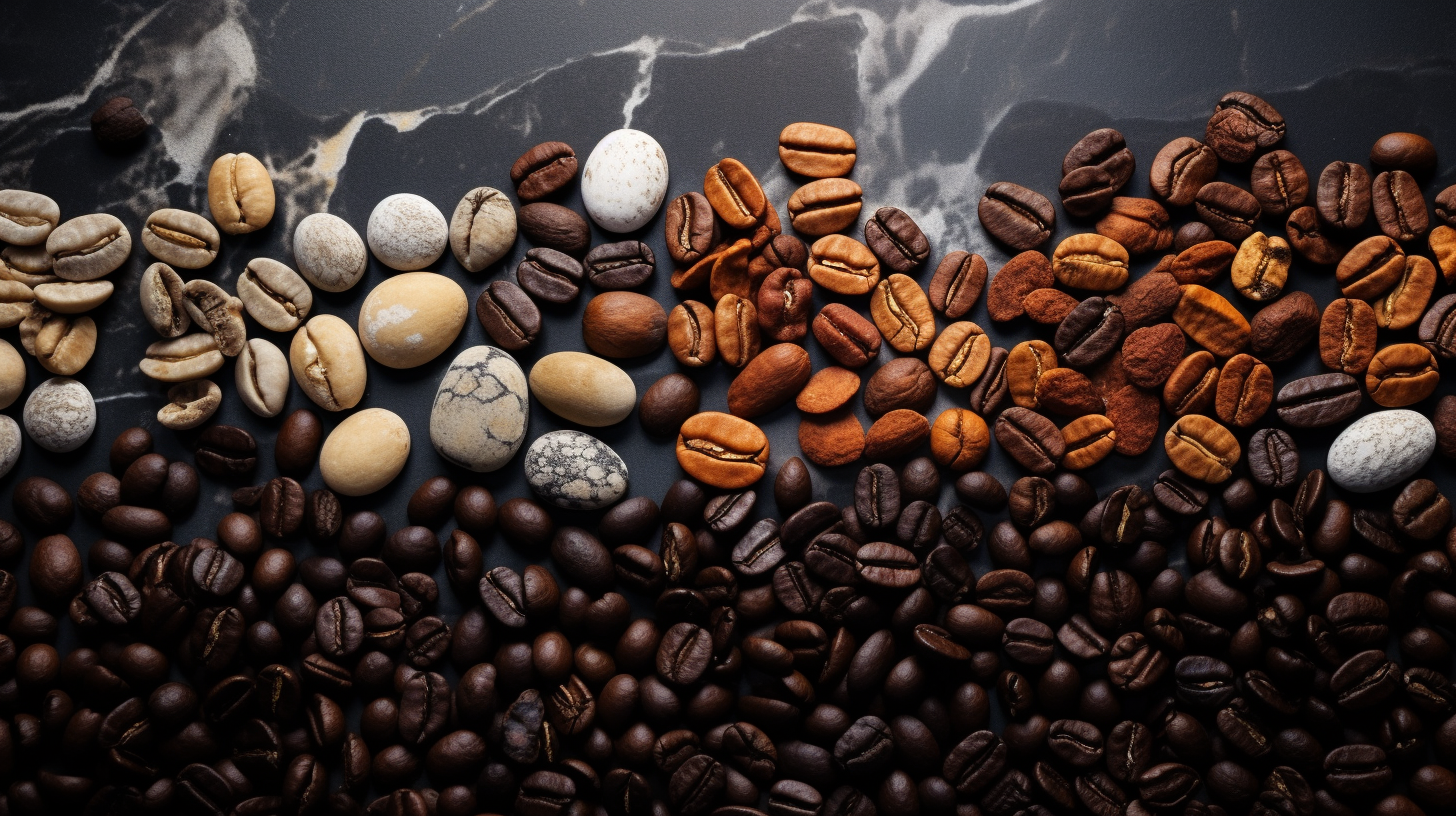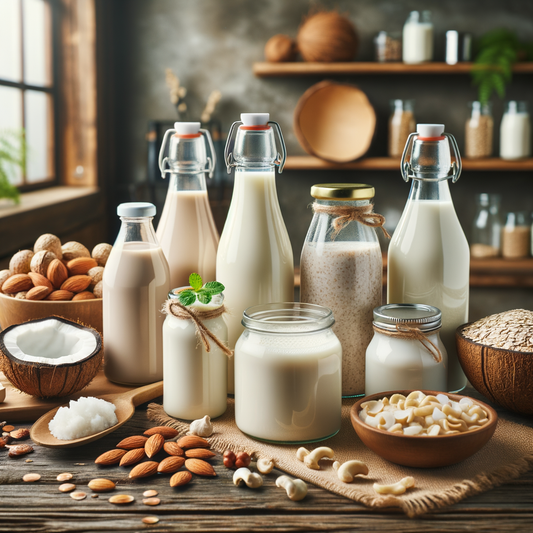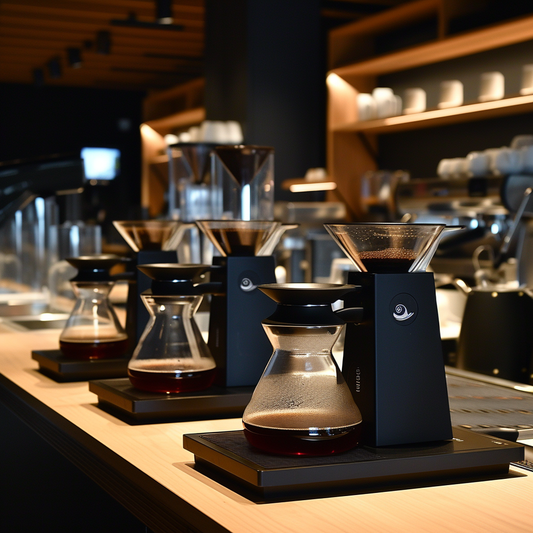Cold brew coffee has exploded in popularity over the last few years. During the sweltering summer months, it seems everyone has traded their hot morning Joe for a smooth, chilled cold brew.
But what exactly is cold brew coffee and why is it taking over café menus across the country? In this post, we'll dig into the cold hard facts about the cold brew craze.
What Is Cold Brew Coffee?
Cold brew coffee is made by steeping coarse coffee grounds in room temperature or cold water for an extended period of time - usually 12 hours or longer. This prolonged steeping time extracts the flavors and caffeine from the beans without introducing heat.
Unlike iced coffee, which is just hot brewed coffee poured over ice, cold brew is never exposed to high temperatures. This cold extraction process results in a naturally sweet, smooth, and highly concentrated coffee concentrate.
The finished cold brew concentrate is then diluted with water and served chilled over ice. Cold brew has a slightly sweeter flavor compared to regular iced coffee with a muted acidity. The lower temperature brewing also avoids the bitter, tannic notes you can sometimes get from hot coffee brewing.
Why Is Cold Brew Coffee Popular?
There are several reasons cold brew has converted so many hot coffee drinkers into icy aficionados:
- Smooth, sweeter flavor - The cold extraction highlights coffee's naturally sweet notes and results in a smooth, mellow flavor without bitterness.
- Higher caffeine content - Ounce for ounce, cold brew contains significantly more caffeine than hot coffee, according to studies. The longer steeping time increases caffeine extraction from the beans.
- Flexibility - Cold brew concentrate keeps refrigerated for up to 2 weeks, so you can enjoy iced coffee anytime. It also customizes well with milk, sweeteners, and mix-in flavors.
- Lower acidity - For those with sensitive stomachs, cold brew is less acidic and easier to digest than hot coffee.
- Summertime refreshment - Nothing quenches thirst and cools you down quite like chilled cold brew coffee. It's a perfect iced coffee drink for warm weather.
Now that you're tempted to try this trendy coffee style for yourself, let's look at a few ways to brew your own cold brew at home. It's simple, affordable, and delicious!
How to Make Cold Brew Coffee

With just coffee grounds, water, and time, you can easily whip up a batch of cold brew. Here's a simple cold-brew coffee recipe to get you started:
Supplies:
- 1 cup coarse ground coffee
- 4 cups filtered water
- Large glass jar or pitcher
- Fine mesh strainer
- Cheesecloth (optional)
Instructions:
- Combine coffee grounds and water in a glass jar or pitcher. Stir to fully saturate the grounds.
- Cover and let steep at room temperature for 12-24 hours.
- Strain the coffee concentrate through a fine mesh strainer lined with cheesecloth to remove all grounds.
- Store concentrate in the fridge for up to 2 weeks.
- To serve, dilute concentrate with 1:1 ratio of water or milk over ice. Adjust dilution to taste.
Once you get the basic recipe down, feel free to experiment with different coffee roast styles, steeping times, flavors, and mixing ratios. Now that you know how to brew this caffeinated cooler, you'll stay chill all summer long!
Cold Brew Coffee Ratio Guide
One of the great things about cold brew is that it's highly customizable to your individual taste preferences. A general guideline is to dilute the concentrate with a 1:1 ratio of cold brew to water or milk. But with that in mind, you can also adjust the ratios to make the coffee stronger or milder.
For a bolder cold brew, try diluting just 1 part concentrate to 1.5 parts water. For a smoother, lighter cold brew, you could do a 1:2 ratio of concentrate to water.
Here are some other cold brew ratios to experiment with:
- 1:1 ratio (Equal parts cold brew concentrate and water) - Standard cold brew ratio
- 1:1.5 ratio (1 part concentrate to 1.5 parts water) - Bolder cold brew
- 1:2 ratio (1 part concentrate to 2 parts water) - Smoother, lighter cold brew
- 1:3 ratio (1 part concentrate to 3 parts milk) - Cold brew latte
The great thing about DIY cold brew is that you get to choose the intensity! Be sure to take notes on which ratios work for your taste buds and always use high quality Cold Brew Coffee.
Fun Flavor Ideas for Cold Brew

Don't limit yourself to plain cold brew. You can enhance your cold coffee with all kinds of tantalizing flavors using syrups, spices, fruit, herbs, nut butters, and more!
Here are some delicious flavor combos to try with our Cold Brew Coffee:
- Pumpkin pie - Pumpkin puree, cinnamon, nutmeg
- Vanilla - Vanilla syrup or extract, vanilla almond milk
- Mocha - Cocoa powder, chocolate syrup
- Caramel - Caramel sauce, sea salt
- Strawberry - Diced strawberries, strawberry puree
- Mint chocolate - Mint extract, cacao nibs, chocolate shavings
- Lavender honey - Lavender syrup, honey
- Thai iced coffee - Condensed milk, cardamom, cinnamon
Let your imagination run wild! The possibilities for custom cold brew drinks are practically endless. Come up with your own signature flavor combinations.
Storing and Shelf Life of Cold Brew
One of the major perks of cold brew coffee is its long shelf life. Sealed cold brew concentrate will stay fresh in the refrigerator for up to 2 weeks.
For long-term storage, you can keep cold brew concentrate in the freezer for 2-3 months. Just be sure to leave some headspace in the container for expansion, as liquids expand when frozen.
When storing pre-diluted cold brew coffee (like the ready-to-drink bottles you can buy), it will keep for about 5-7 days refrigerated.
Tightly sealed glass or plastic containers are ideal for minimizing air exposure and preventing any odor absorption in the fridge. With proper storage, you'll have cold brew ready whenever that iced coffee craving strikes!
Health Benefits of Drinking Cold Brew
There are some intriguing health perks associated with choosing cold brew over other coffee drinks. Cold brew coffee contains higher levels of antioxidants like polyphenols because cold water extracts these compounds better than hot water according to studies. The increased antioxidant content may help neutralize free radicals and reduce inflammation.
Additionally, the cold brew process creates coffee with less acidity and is easier on sensitive stomachs. Those with gastroesophageal reflux disease (GERD) often find cold brew less likely to aggravate symptoms compared to drip or espresso.
Research also indicates cold brew may lead to a less significant increase in blood pressure compared to hot coffee after consumption. The cold extraction results in lower levels of lipids and other compounds linked to blood pressure elevation.
The chilled nature of cold brew makes it more refreshing and hydrating than coffee served hot, which may contribute to improved mood and cognitive function. Cold beverages tend to be absorbed more rapidly for quicker hydration.
Finally, the naturally sweeter flavor profile means you may need less sugar or creamers to enjoy black cold brew. Consuming coffee with less additives is a healthier way to get your caffeine fix.
While more research is needed, the minimal processing preserves cold brew's healthy plant compounds. In moderation, cold brew appears to be a healthier iced coffee option than hot brewed varieties.
Sustainability and Sourcing: The Future of Cold Brew

As cold brew coffee continues gaining popularity, it's important for coffee companies and cafes to consider sustainability and ethical sourcing.
There are a few ways the cold brew industry can improve its sustainability footprint:
- Source beans from fair trade, organic farmers to support livelihoods. Seek farmers using eco-friendly practices like shade-grown coffee.
- Choose responsible packaging - Use renewable materials like bamboo fiber rather than plastics for cold brew packaging. Or provide discounts for bring-your-own bottles.
- Reduce waste - Encourage reusable straws, mugs and bottles. Compost or recycle filters, grounds and other coffee waste.
- Conserve water - Optimize the coffee bean to water ratio and steer clear of diluted drinks that waste water resources.
- Support third-wave roasters - These artisan roasters focus on quality, sustainability and ethical relationships from crop to cup.
With consumer interest in sustainability rising across industries, the future of cold brew coffee will depend on responsible growing, production and consumption habits. This ensures we can all keep enjoying this delicious chilled coffee drink for years to come. Learn more about how Roasted Origins is committed to sustainable practices.
Get Your Cold Brew On with Roasted Origins
Cold brew coffee has fast become the trendiest way to get your caffeine fix during hot summer months. As we've explored, steeping coarse coffee grounds in cold or room temperature water for 12+ hours creates a naturally sweet, smooth, and highly concentrated coffee concentrate.
Compared to traditional hot coffee and iced coffee made from hot brew, cold brew offers a less acidic and more mellow flavor profile. It's higher in caffeine and antioxidants and easier on sensitive stomachs. With options to customize the strength and flavor, it's no wonder cold brew is loved by iced coffee aficionados.
This refreshing chilled coffee can be enjoyed black or with milk, sweeteners and delicious mix-in flavors. You can even use it in recipes like desserts, energy bites and protein shakes. As the demand for cold brew grows, a focus on sustainability and ethical sourcing will be key to the future of cold brew coffee.
Thanks for joining us on a deep dive into the cold brew coffee phenomenon. We hope this post has brewed up an appreciation for how incredible simple ingredients of coffee and water can create an invigorating iced coffee experience. Stay cool and caffeinated with our Organic Cold Brew!





